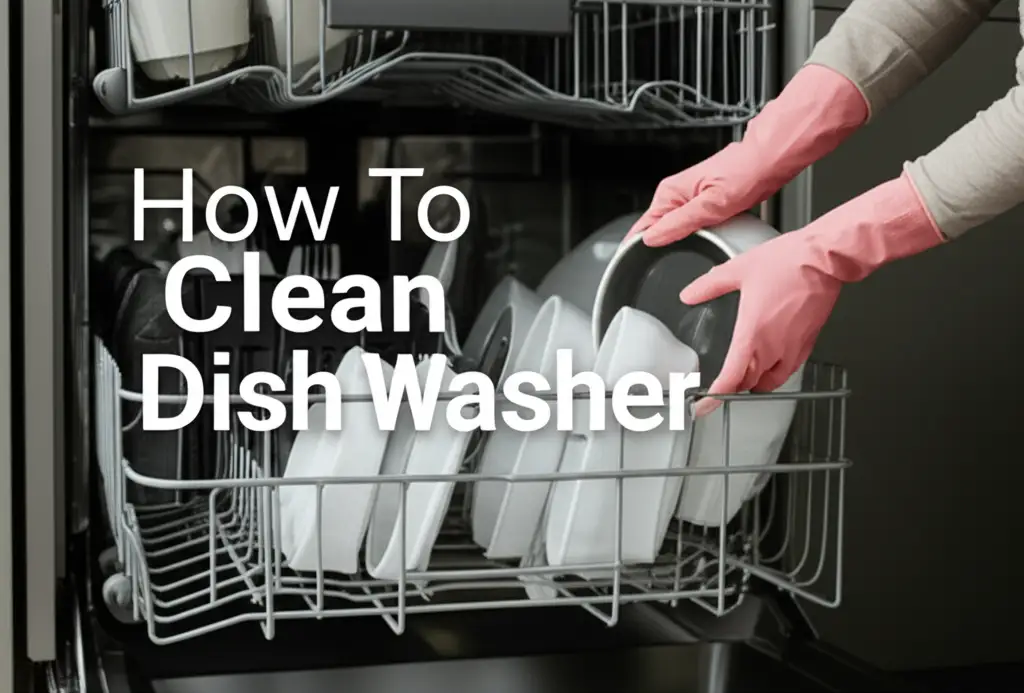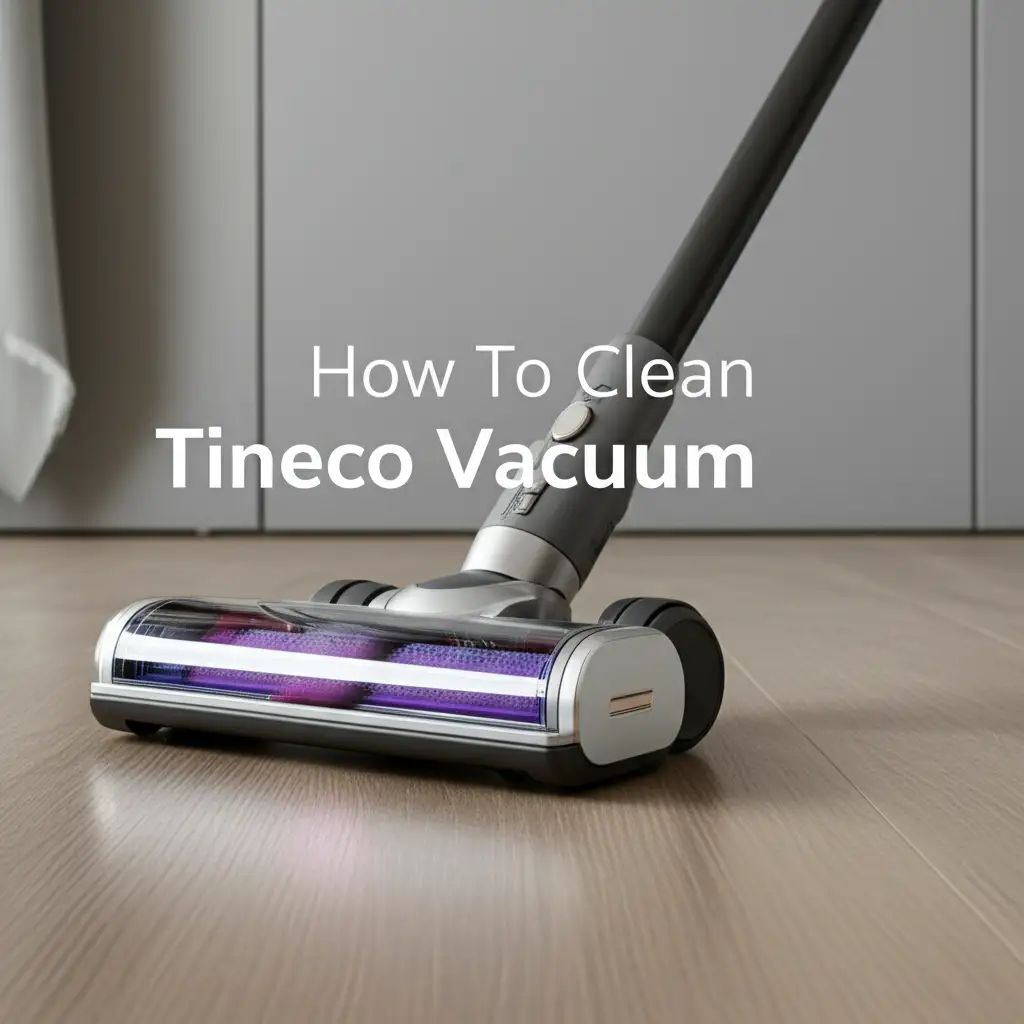· Home Cleaning · 17 min read
How To Clean Inside Of Keurig

Restore Your Brew: How To Clean Inside Of Keurig Effectively
Is your morning coffee tasting a bit off? Perhaps it brews slower than usual, or you see tiny flakes in your cup. These are common signs that your Keurig coffee maker needs a thorough internal cleaning. Learning how to clean inside of Keurig machines is essential for great-tasting coffee and a longer appliance life. Mineral buildup and coffee residue gather inside over time. This buildup impacts flavor and can even damage your machine.
I will guide you through simple steps to make your Keurig machine sparkle from the inside out. We will cover routine care and deep descaling. You will discover how to keep your Keurig running efficiently. Follow these tips to enjoy perfectly fresh coffee every single day.
Takeaway
- Regularly descale your Keurig using vinegar or a commercial solution.
- Clean removable parts like the water reservoir and drip tray weekly.
- Maintain the K-Cup holder and needle to prevent clogs.
- Perform deep cleaning every 3-6 months based on water hardness.
To clean inside your Keurig, regularly descale it using vinegar or a descaling solution to remove mineral buildup. Also, clean removable parts like the water reservoir, drip tray, and K-Cup holder with soap and water. This prevents clogs, improves taste, and extends machine life.
Why Internal Keurig Cleaning Matters for Your Brew
Your Keurig coffee maker works hard every day. It heats water and brews coffee quickly for you. Over time, calcium and magnesium deposits build up inside. This mineral buildup comes from the water you use. This buildup is called scale. Scale can clog the internal tubes and heating elements of your machine. When scale accumulates, your coffee may taste bad. The brewing process also slows down.
Regular internal cleaning solves these problems. It ensures your Keurig brews at the correct temperature and pressure. This helps your coffee taste fresh and delicious. A clean machine also works more efficiently. This saves energy. It also helps your Keurig last longer. Neglecting internal cleaning shortens the lifespan of your appliance. A proper cleaning routine is key to maintaining your coffee experience.
The Hidden Dangers of Neglect
Ignoring internal Keurig cleaning can lead to several problems. Mineral deposits make the heating element work harder. This uses more energy and can lead to overheating. Parts can break down faster. Also, old coffee oils and residue can build up. These residues affect the taste of your coffee. Your favorite brew might taste bitter or stale.
Bacteria and mold can also grow in moist, dark areas if not cleaned. This can be unhealthy. You might notice strange particles in your coffee. These particles come from inside the machine. Regular cleaning stops these issues. It keeps your coffee safe and tasty. I always recommend proactive cleaning for the best results.
Keeping Your Coffee Fresh
A clean Keurig delivers the freshest coffee taste. You want to taste the coffee, not the residue. When your machine is free of scale and old coffee oils, the water passes through cleanly. It interacts with your K-Cup perfectly. This allows the full flavor of your coffee to shine. It brings out the rich aromas and nuanced notes in every cup.
Think of it like cooking with clean pots and pans. You get the best food when your equipment is clean. The same applies to your coffee maker. A well-maintained Keurig ensures consistent quality. This means you get a perfect cup of coffee every time. I find that this small effort makes a huge difference in my daily coffee ritual.
Essential Supplies for Effective Keurig Cleaning
Before you start cleaning the inside of your Keurig, gather all necessary supplies. Having everything ready makes the process smooth. You will need a descaling agent. This can be white vinegar or a commercial descaling solution. Both work well to break down mineral buildup. White vinegar is a popular and inexpensive choice. Commercial solutions are designed specifically for coffee makers.
You will also need dish soap for general cleaning. A soft cloth or sponge is useful for wiping surfaces. A sturdy brush, like a toothbrush or a small bottle brush, helps clean tight spots. Some people also use a paperclip or a specialized tool to clear the Keurig needle. These simple tools ensure you can reach every area. Gathering these items first saves time and effort.
Natural Descaling Agents
White vinegar is a common household item. It is also an excellent natural descaling agent for your Keurig. Vinegar contains acetic acid. This acid effectively dissolves mineral deposits. It is non-toxic and food-safe once thoroughly rinsed. Many people prefer vinegar because it is readily available and affordable.
When using vinegar, make sure it is undiluted white vinegar. Avoid apple cider vinegar or other types. They can leave residues or odors. Vinegar is strong enough to tackle most scale buildup. It is a reliable choice for your regular descaling needs. I often use vinegar for my own Keurig because it works so well. For a detailed guide, you can read more about how to clean keurig with vinegar.
Specialized Cleaning Solutions
Commercial descaling solutions offer another effective option. These products are formulated to dissolve scale quickly. They are specifically made for coffee machines. Brands like Keurig offer their own descaling solutions. Other brands also produce compatible cleaners. These solutions often work faster than vinegar. They also may leave less odor.
Follow the instructions on the package carefully when using a commercial solution. The concentration and rinse cycles might differ from vinegar. Commercial solutions can be a bit more expensive than vinegar. However, they provide a convenient and effective alternative. Many users find them easy to use. The choice between vinegar and a commercial solution often comes down to personal preference and budget.
Step-by-Step Keurig Descaling with Vinegar
Descaling your Keurig with vinegar is a straightforward process. It removes the internal mineral buildup. This buildup affects both taste and machine performance. I will walk you through each step. First, ensure your Keurig is unplugged. Then, empty the water reservoir completely. This prepares the machine for the descaling solution. Always start with a cool machine for safety and best results.
This process involves running several cycles. You will use a vinegar solution for the first set of cycles. Then, you will use fresh water for rinsing. The goal is to flush out all scale and vinegar residue. This ensures your next cup of coffee tastes great. Take your time with each step to ensure a thorough clean.
Preparing Your Keurig for Descaling
Before you begin, turn off and unplug your Keurig. This is a crucial safety step. Next, remove the water reservoir from the machine. Empty any remaining water from the reservoir. You should also remove the K-Cup holder and the drip tray. Wash these parts separately with warm, soapy water. Rinse them well and set them aside to dry.
Now, prepare your descaling solution. For most Keurig models, a 50/50 mixture of white vinegar and water works best. Fill the reservoir half with white vinegar. Then, fill the other half with fresh water. Place the empty reservoir back on the machine. Put a large mug on the drip tray to catch the liquid. This mug should be big enough to hold at least 10 ounces of liquid.
The Descaling Cycle
Plug your Keurig back in. Turn it on. Do not insert a K-Cup. Lift and close the K-Cup holder lid. Press the brew button as if making a cup of coffee. Repeat this process until the water reservoir is empty. The machine will likely pause or indicate that it needs more water. Once empty, let the machine sit for at least 30 minutes. This allows the vinegar to work on the stubborn mineral deposits.
After the resting period, fill the reservoir again with the 50/50 vinegar and water solution. Run through the brew cycle process again until the reservoir is empty. This second pass ensures that even more scale dissolves. It also pushes out any remaining loose particles. Remember to keep a large mug under the dispenser to catch the output. Repeat these steps one more time if your Keurig has significant buildup or if you have very hard water.
Rinsing Away Residue
Once you have completed the vinegar cycles, the next step is crucial. You must rinse all vinegar residue from the machine. Remove the water reservoir and wash it thoroughly with soap and water. Rinse it several times to remove any vinegar smell. Then, fill the reservoir with only fresh, clean water. Place it back on the machine.
Run multiple plain water brew cycles. Do not insert a K-Cup. Continue brewing with plain water until the reservoir is empty. Repeat this entire rinsing process two to three more times. This ensures that no vinegar taste or smell remains in your Keurig. You might notice small white particles during the first few rinse cycles. These are mineral deposits breaking free. This is a good sign that the descaling worked. For more detailed instructions on using vinegar, check out our guide on how to clean keurig with vinegar.
Descaling with a Commercial Solution
Using a commercial descaling solution offers an alternative to vinegar. These solutions are specifically designed for coffee machines. They aim to efficiently remove mineral buildup. Many Keurig users prefer these solutions for convenience. They also like that these solutions typically leave no lingering odor. The process is similar to using vinegar but with specific product instructions.
Always read the directions on the descaling solution bottle carefully. Each brand might have different dilution ratios or cycle recommendations. Some solutions are concentrated and require mixing with water. Others are ready to use. Following the manufacturer’s guide ensures effective cleaning and prevents damage to your appliance. Commercial descaling solutions often work faster. This is due to their specific chemical compositions.
Advantages of Commercial Descalers
Commercial descaling solutions come with several benefits. They are precisely formulated to target mineral deposits. This means they often work more quickly than vinegar. They can dissolve even tough scale buildup efficiently. Many users find them more convenient because they remove the guesswork of dilution. You simply follow the bottle’s instructions.
Another key advantage is the lack of residual odor. Unlike vinegar, which can leave a strong smell if not rinsed thoroughly, commercial solutions are often odorless. This means you spend less time on rinsing cycles. Your coffee will not have any lingering strange tastes. For those who dislike the smell of vinegar, commercial descalers are a good choice. They deliver effective cleaning with less effort.
Following Product Instructions
When you use a commercial descaling solution, always follow the package directions. Do not guess the amounts or steps. Each product is unique. The instructions will tell you how much solution to use. They will also specify how to dilute it, if needed. The packaging will also explain the descaling cycle steps. It will tell you how many rinse cycles to perform afterward.
Typically, you will pour the solution into the water reservoir. You then run brew cycles without a K-Cup. After the descaling cycles, you will rinse the machine with plain water. This flushes out the solution. Missing any steps can leave residue in your machine. It can also affect the taste of your coffee. Proper use ensures a clean machine and great-tasting coffee.
Daily and Weekly Internal Keurig Maintenance
Beyond descaling, regular cleaning of your Keurig’s removable parts is vital. These routine cleaning tasks prevent residue buildup. They also stop bacteria growth. This keeps your coffee tasting its best every day. I make sure to do these small tasks often. This saves me from bigger cleaning jobs later.
These simple cleaning habits make a big difference. They keep your machine hygienic. They also prolong the life of your Keurig. You do not need special tools for these daily or weekly cleanings. Just simple soap and water work well. Make it a part of your kitchen cleanup routine.
Cleaning the Water Reservoir
The water reservoir is where your coffee machine holds water. It is exposed to light and air. This makes it prone to algae or slime growth. I recommend cleaning your water reservoir at least once a week. If you use tap water, cleaning it more often is better. First, empty any remaining water. Then, remove the reservoir from the machine.
Wash the reservoir with warm water and mild dish soap. Use a soft brush or sponge to clean all surfaces. Pay attention to the bottom and corners. Rinse the reservoir thoroughly under running water. Ensure no soap residue remains. Let it air dry completely before putting it back on the machine. This prevents water spots and growth.
Maintaining the K-Cup Holder and Needle
The K-Cup holder and the entry/exit needles get direct contact with coffee. Coffee oils and grounds can build up here. This can lead to clogs and affect the taste of your brew. You should clean the K-Cup holder weekly. Some models allow you to remove the entire K-Cup holder assembly. If yours does, remove it.
Wash the K-Cup holder with warm, soapy water. Use a small brush to scrub away any coffee grounds or residue. Rinse it well. For the entry and exit needles, use a straightened paperclip. Carefully insert the paperclip into each needle opening. Gently move it around to clear any clogs. Be careful not to bend the needles. Some Keurig models come with a special needle cleaning tool. Always refer to your Keurig’s manual for specific instructions on cleaning these parts.
Drip Tray and Exterior Care
The drip tray catches any spills or drips from brewing. It can accumulate coffee and water. This area is a breeding ground for mold and bacteria if not cleaned. Empty and rinse your drip tray daily or after each use. Wash it with warm, soapy water weekly. Scrub away any stains or residue. Rinse it thoroughly and dry it before placing it back.
Wipe down the exterior of your Keurig regularly. Use a damp cloth to remove dust, coffee splatters, and fingerprints. A microfiber cloth works well for a streak-free shine. Keep the power cord tidy and clean. This simple step keeps your Keurig looking good on your counter. It also contributes to overall kitchen hygiene.
Troubleshooting Common Keurig Cleaning Issues
Even with regular cleaning, you might encounter some common issues. Sometimes, a lingering smell or taste persists. Other times, the machine still seems clogged. These problems can be frustrating. However, they usually have simple solutions. Do not give up on your Keurig. A little extra attention often resolves these concerns.
I have faced these issues myself. I will share some tips to help you get your Keurig back in top shape. Understanding these solutions saves you time and effort. It also helps you avoid unnecessary appliance repairs. Most cleaning problems stem from incomplete descaling or rinsing. Addressing these directly usually fixes the issue.
Persistent Vinegar Odor
After descaling with vinegar, some users report a lingering vinegar smell or taste. This means the rinsing cycles were not enough. The good news is this is easy to fix. Simply run more plain water cycles through your Keurig. Fill the water reservoir with fresh water. Brew full cups of plain water until the reservoir is empty. Repeat this two or three more times.
You can also try using filtered water for the rinse cycles. This can help remove any remaining impurities. Another trick is to let the machine sit with fresh water in the reservoir overnight. Then, run a few more plain water cycles in the morning. The smell will eventually dissipate with thorough rinsing. Patience is key here.
Stubborn Clogs
If your Keurig brews slowly or water barely comes out, it might have a stubborn clog. This often happens in the internal tubes or the needles. Start by cleaning the K-Cup holder and the entry/exit needles thoroughly. Use a paperclip or the Keurig needle tool to clear any blockages. Sometimes, old coffee grounds get stuck.
If the problem persists, perform another descaling cycle. Use a stronger solution if necessary, like undiluted white vinegar for the first descaling pass. Or, use a commercial descaling solution. Let the solution sit in the machine for a longer period, up to an hour, before running brew cycles. Follow up with ample plain water rinse cycles. This often clears stubborn mineral buildup.
When to Seek Professional Help
Most Keurig cleaning issues are solvable at home. However, sometimes problems might be more complex. If your machine shows error codes, does not heat water, or continues to leak after cleaning, professional help might be needed. These issues could indicate a faulty internal component. Descaling and cleaning cannot fix mechanical failures.
Check your Keurig’s warranty information before seeking repairs. Some problems might be covered. If your machine is old, consider if repair costs are worth it. Sometimes, buying a new machine is more cost-effective than repairing an old, failing one. Always contact Keurig customer support for guidance on specific error codes or persistent issues. They can offer model-specific troubleshooting.
How Often Should You Clean Your Keurig?
The frequency of cleaning your Keurig depends on several factors. These include how often you use it and the hardness of your water. Regular cleaning prevents problems. It also ensures your coffee always tastes good. I have found that a consistent schedule works best. This prevents significant buildup.
General recommendations exist, but adjust them to your personal habits. My usage differs from yours. So, my cleaning schedule might vary too. Pay attention to how your machine performs. This will give you clues about when it needs cleaning.
Understanding Water Hardness
Water hardness is a key factor in how often you should descale. Hard water contains high levels of dissolved minerals. These minerals are typically calcium and magnesium. When hard water heats up, these minerals precipitate out. They form scale inside your Keurig. If you live in an area with hard water, your machine will accumulate scale faster.
You can check your local water quality report to learn about your water hardness. Many municipal water providers offer this information online. If you use well water, you might have very hard water. Using a water filter can help reduce mineral content. However, it does not eliminate the need for descaling. People with hard water may need to descale their Keurig every 1-2 months.
Recommended Cleaning Schedule
I recommend a layered cleaning approach for your Keurig:
- Daily: Empty and rinse the drip tray. Wipe down the exterior.
- Weekly: Wash the water reservoir with soap and water. Clean the K-Cup holder and needle with soap and a brush/paperclip.
- Monthly (or Every 1-2 Months for Hard Water): Perform a full descaling cycle. Use vinegar or a commercial descaling solution. Follow with multiple rinse cycles.
- Every 3-6 Months: Give your Keurig a deep clean. This includes all the monthly steps. It also includes wiping down all accessible internal components.
If your coffee starts tasting strange or brewing slowly before these intervals, clean it sooner. Your Keurig might also have a descaling indicator light. Pay attention to this light. It tells you when the machine detects significant mineral buildup. Following this schedule will keep your Keurig clean and your coffee delicious.
Conclusion
Keeping your Keurig clean inside is not just about hygiene; it is about preserving the joy of your daily coffee ritual. We have explored every aspect of how to clean inside of Keurig machines. From understanding the importance of descaling to performing routine maintenance, you now have the knowledge. You can easily tackle mineral buildup and coffee residue. Remember, a clean machine brews better coffee and lasts longer.
Make descaling and regular cleaning a consistent part of your kitchen routine. This small effort yields huge benefits. You will enjoy consistently delicious, fresh-tasting coffee. Your Keurig will also work more efficiently for years to come. Take action today to give your Keurig the care it deserves. Start brewing clearer, richer coffee tomorrow. Your taste buds will thank you for it.
- Keurig cleaning
- descaling
- coffee maker maintenance
- appliance care
- kitchen hygiene




